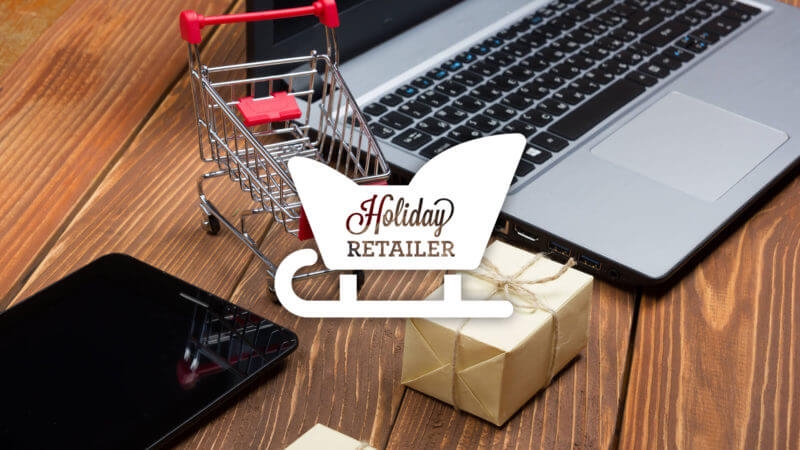Thanks to high consumer expectations and a surge in shipments, delivering goods for the holidays can be complicated. Contributor Tom Mucklow offers 10 tips to ease the holiday madness.

Last year, holiday e-commerce sales rose by 17.8 percent, and this year, revenue is set to hit an unprecedented $107 billion, according to eMarketer.
As online demand increases, so does the need for scalable, global-friendly checkout and logistics solutions to ensure each holiday package gets easily shipped to the correct address.
The online experience influences 79 percent of all transactions (both online and offline), according to a UPS study titled “Pulse of the Online Shopper.” Repeat business, however, is mostly influenced by how customers feel after they receive their goods.
With FedEx and UPS handling more than 30 million holiday packages per day combined, delivery gets exponentially more complicated when businesses begin to ship abroad. The rise in internationalization, coupled with an increase in regionally diverse customers, means that e-commerce businesses must align their online purchase experience to complement their offline delivery strategy.
Today’s customer experience starts the moment a shopper lands on your site and continues through to package delivery. By paying close attention to your customer journey, and connecting it with the unique nuances of their region, you can improve your global performance this holiday season and ensure continued prosperity in the year ahead.
Here are some tips from a delivery perspective for optimizing your international business efforts this holiday season.
1. Keep forms short
Form length is one of the key reasons of cart abandonment. The Baymard Institute found that almost a third of all shoppers abandon their checkout as a result of it being too long or complicated. Reducing form fields down to the bare essentials will give you a greater chance of driving purchases through completion.
2. Think about form field labels
Consider label placement, as this can impact a shopper’s behavior. Placing labels above the form field is effective on desktop and even more so on mobile devices.
Ensuring that form fields are well labeled reduces friction and cognitive load on customers trying to complete a purchase.
3. Use type-ahead address verification
A recent study from my company found that when compared with other primary methods of address collection, 84 percent of shoppers prefer type-ahead address verification. Type-ahead makes it quicker and easier for shoppers to search for and enter their address details, including international information, while also verifying the data against local postal databases.
We also found that type-ahead reduces keystrokes by up to 80 percent and ensures that only accurate and valid addresses are captured at the point of entry, improving operations and delivery efficiency.
Strategies and tactics for retail marketers delivered directly to your inbox. Sign up below!
4. Launch the right keyboard
Launching the right keyboard is essential for optimizing the checkout, especially on mobile devices. It’s important to include the right attributes on your site’s code to fetch the correct keyboard for the input. This makes data input much quicker and easier, reducing the opportunity for cart abandonment.
5. Understand international address formats
When offering international shipping, it’s important to understand the formatting of international address data for a frictionless checkout flow. Adaptive checkout fields that mimic country formatting allow customers to breeze through checkouts without thinking twice about how to input their address.
Another method that’s quickly gaining popularity is a single-line form field. Typing any part of an address on a single line is quicker, takes up less space on your checkout page and provides an interface that’s adaptable to all types of devices and address formats, allowing customers to input their information in whatever order they choose.
6. Make sure you get the right courier for the job
Based on your destination, choose a courier that has strong user reviews and fast delivery speeds. It pays to research different couriers — you might even find regional ones that offer great service and better rates than more well-known brands.
Easyship, ShipGooder and similar sites provide tools to calculate your shipping rate and can be used when calculating international shipping so you can save your customers money and take your business global.
7. Choose a service that offers excellent tracking
Due to the extremely high volume of holiday shipments, it’s likely that delays will occur. It’s important to choose a courier that has frequent tracking updates, as they will cover all the steps in transit (from pickup to arrival/departure in customs to delivery.) This will allow customers to closely monitor their shipments and reduce the risk of loss or frustration.
8. Ensure shipping documentation is accurate and complete
Incorrect and missing information can cause delays and major holiday disappointments. To avoid failed shipments or delays in processing, ensure you collect accurate customer address information and that you understand what’s needed from a documentation and customs perspective.
9. Avoid firm delivery dates
When dealing with lost or delayed packages, avoid giving customers a firm delivery date. Manage expectations, and don’t commit to something that’s out of your control.
Instead, stay in contact with your courier to find a solution, and update the customer in real time by leveraging push notifications or text messaging.
10. Deliver shipments with prepaid duty
For international shipments, it’s always best practice to deliver a shipment with duty prepaid. While it’s cheaper to leave the duty to your customers, you run the risk of a customer refusing to pay the additional costs and returning the item with a bad feeling about your business. You’ll end up having to handle the payment anyway, or abandon your shipment at customs.
And remember, the most important thing about the holidays is spreading good cheer — whether your customers live down the street or around the world. And with today’s technologies, you have the power to reach more people than ever before.
Some opinions expressed in this article may be those of a guest author and not necessarily Marketing Land. Staff authors are listed here.
Marketing Land – Internet Marketing News, Strategies & Tips
(31)










